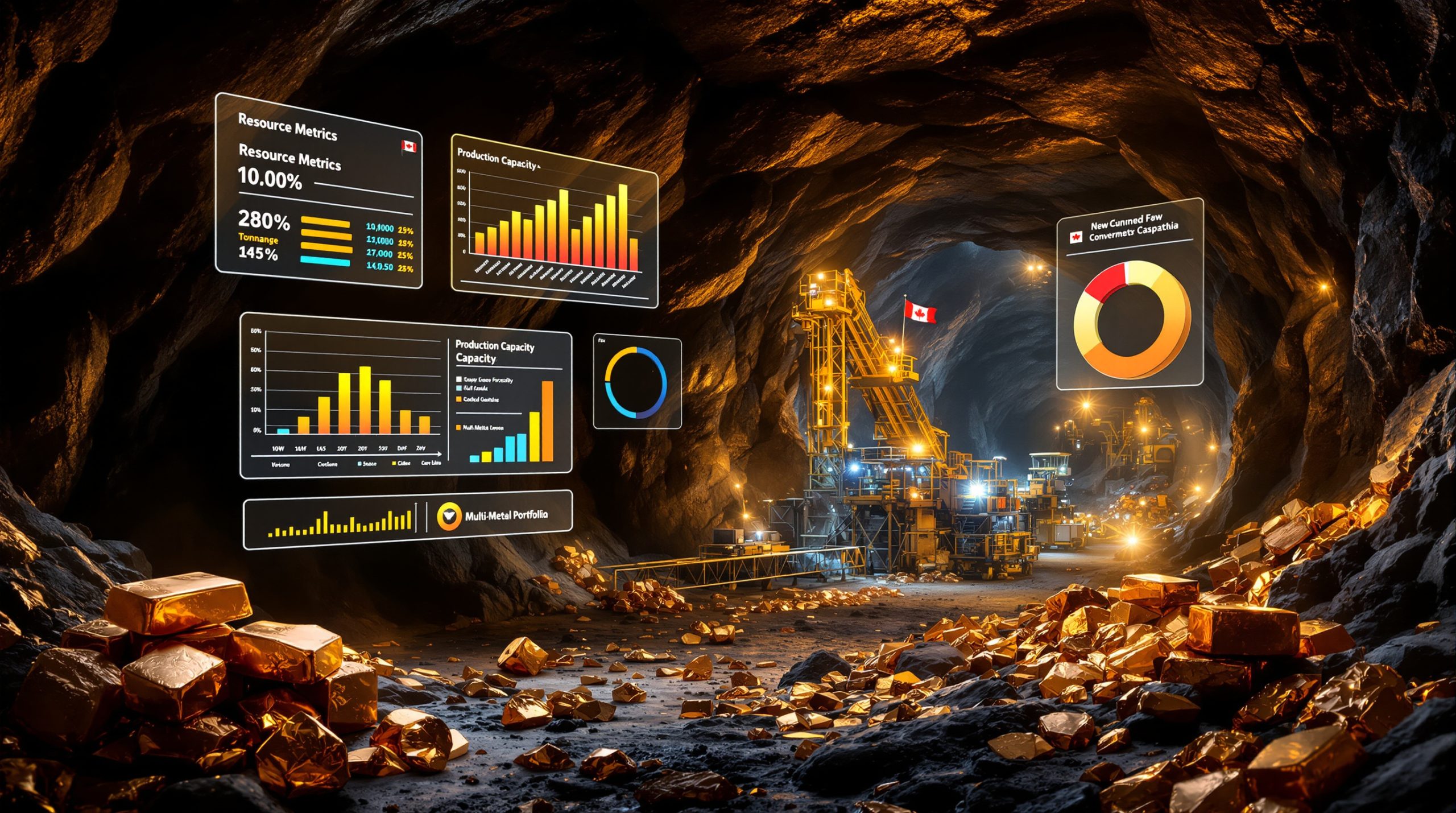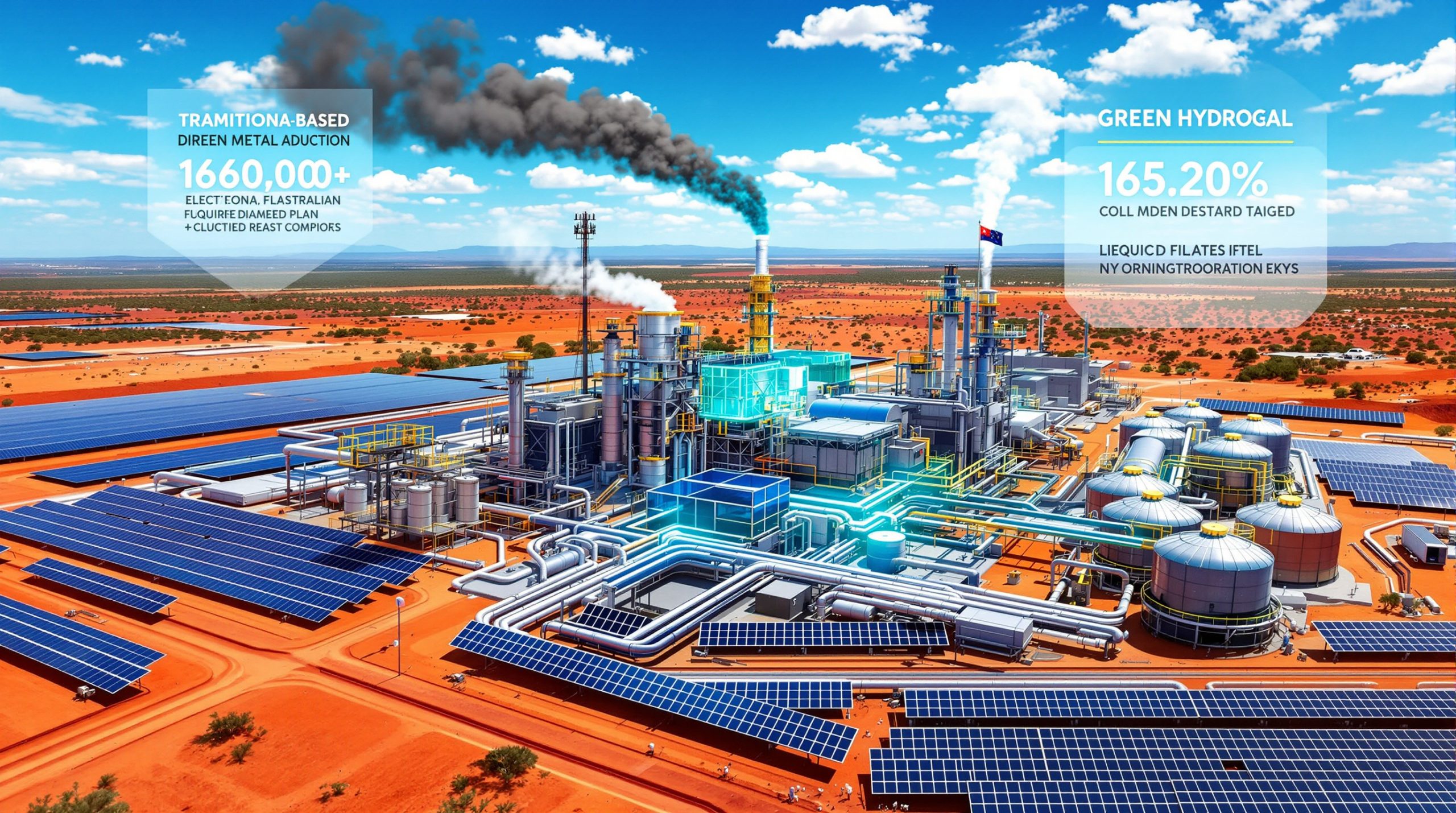Resource Optimization in Global Copper Markets
The mining sector's current landscape reveals significant opportunities for investors seeking exposure to multi-metal operations with established infrastructure advantages. While copper price predictions continue their upward trajectory, projects that combine strategic geographical positioning with existing operational frameworks present compelling value propositions. Understanding the technical characteristics that differentiate premium copper-gold developments requires careful analysis of resource metrics, processing capabilities, and production scalability potential.
FireFly Metals Green Bay Project: Technical Infrastructure Analysis
Resource Scale and Metallurgical Characteristics
The FireFly Metals Green Bay Copper-Gold Project represents a substantial volcanogenic massive sulfide system containing 50.4 million tonnes at 2.0% copper equivalent in measured and indicated categories. The project's technical merit stems from its multi-metal profile, with copper forming the primary revenue driver at 863,000 tonnes in M&I resources, while gold provides significant by-product value at 546,000 ounces in M&I resources.
Resource Metrics Overview:
| Category | Tonnage (Mt) | Cu Grade (%) | Au Grade (g/t) | CuEq (%) | Contained Cu (kt) | Contained Au (koz) |
|---|---|---|---|---|---|---|
| M&I Resources | 50.4 | 1.7 | 0.5 | 2.0 | 863 | 546 |
| Inferred Resources | 29.3 | 1.9 | 0.6 | 2.5 | 566 | 563 |
| Total Resources | 79.7 | 1.8 | 0.5 | 2.2 | 1,429 | 1,109 |
The metallurgical profile demonstrates characteristics typical of VMS-style mineralisation, with conventional flotation processing suitable for copper-gold separation. Furthermore, silver represents an additional revenue stream, contributing 5.0 million ounces in M&I resources plus 4.8 million ounces in inferred resources, according to recent resource estimates.
Existing Infrastructure and Operational Framework
The project benefits from established underground infrastructure that significantly differentiates it from greenfield developments. The Ming underground mine features several key operational advantages:
- Established decline access providing immediate underground entry
- Multi-level shaft system enabling efficient material handling
- Surface processing infrastructure through the Nugget Pond facility
- Port facilities at regional shipping terminals
This infrastructure foundation enables rapid resource expansion through underground drilling positions, circumventing the lengthy permitting and construction phases typical of new mining developments. In addition, the existing underground access points provide cost-effective exploration platforms compared to surface-based drilling campaigns.
Resource Base Evolution and Expansion Strategy
Recent Resource Growth Analysis
The November 2024 resource update demonstrated substantial growth in the underlying asset base, with total tonnage increasing from 37.3 million tonnes to 50.4 million tonnes, representing a 35% increase. More significantly, contained copper equivalent expanded from 663,000 tonnes to 1,000,000 tonnes, marking a 51% increase.
Resource Growth Metrics:
| Metric | October 2024 | November 2024 | Change |
|---|---|---|---|
| Total Tonnage (Mt) | 37.3 | 50.4 | +35% |
| Contained CuEq (kt) | 663 | 1,000 | +51% |
| M&I Copper (kt) | 571 | 863 | +51% |
| M&I Gold (koz) | 361 | 546 | +51% |
Systematic Exploration Methodology
The exploration strategy centres on the Lower Footwall Zone (LFWZ), which has demonstrated mineralisation continuity at depth with significant intersections. The planned drilling program leverages existing underground access points, enabling cost-effective resource delineation compared to surface-based exploration.
Key Exploration Components:
- Diamond drilling program utilising underground platforms
- Step-out drilling to test strike and depth extensions
- Systematic infill drilling for resource classification upgrades
- Metallurgical sampling for processing parameter optimisation
The underground exploration approach provides several advantages, including year-round drilling capability, reduced environmental surface disturbance, and direct access to target zones without lengthy surface preparation. However, mineral exploration for gold & copper requires careful planning and systematic execution to achieve optimal results.
Production Capacity and Throughput Analysis
Macquarie's Revised Production Framework
Investment analysis from Macquarie projects significantly larger operational scale than initially conceived. The investment bank's modelling indicates potential for 3.5 million tonnes annually throughput, compared to previous 2.0 million tonnes assumptions, representing a 75% increase in processing capacity.
Updated Production Parameters:
| Metric | Previous Forecast | Updated Forecast | Change |
|---|---|---|---|
| Annual Throughput | 2.0 Mtpa | 3.5 Mtpa | +75% |
| Copper Production | 32 ktpa | 59 ktpa | +84% |
| Mine Life | 15 years | 17 years | +13% |
| Mining Inventory | 30 Mt | 54.5 Mt | +82% |
The rationale for increased throughput centres on economic optimisation. Maintaining lower throughput rates would result in excessively long mine life scenarios that would not represent optimal operating conditions. Consequently, the higher throughput assumption drives increased copper production to 59,000 tonnes per annum while maintaining a more economically viable 17-year mine plan.
Processing Infrastructure Requirements
The existing Nugget Pond processing facility provides operational foundation, though expansion to 3.5 million tonnes annually would require significant plant upgrades. VMS-style mineralisation typically responds favourably to conventional flotation processing, with copper concentrates meeting global smelter specifications.
Processing Optimisation Considerations:
- Flotation circuit efficiency for multi-metal separation
- Concentrate grade specifications for smelter acceptance
- Silver recovery systems for additional by-product revenue
- Tailings management infrastructure for expanded volumes
The multi-metal characteristics provide revenue diversification benefits, with gold and silver contributing to overall project economics beyond primary copper production. This aligns with current copper investment strategies that favour diversified revenue streams.
Global Copper Development Competitive Analysis
Jurisdictional Risk Assessment
Newfoundland and Labrador provides several jurisdictional advantages for mining operations:
Regulatory Stability: Established mining codes with predictable permitting frameworks
Taxation Environment: Competitive fiscal regime for mining investments
Workforce Access: Regional mining expertise and labour availability
Infrastructure Connectivity: Atlantic shipping access to global markets
The provincial jurisdiction ranks favourably in international mining investment surveys, providing political and regulatory stability that reduces development risks compared to higher-risk jurisdictions.
Technical Positioning Against Peer Projects
The FireFly Metals Green Bay Copper-Gold Project's technical characteristics position it competitively within global copper development landscapes:
Competitive Advantages:
- High-grade resource base exceeding typical copper project grades
- Existing infrastructure reducing capital development requirements
- Multi-metal revenue streams providing cash flow diversification
- Exploration expansion potential in proven VMS geological terrain
Development Considerations:
- Remote location factors requiring workforce logistics management
- Seasonal operational impacts on surface activities
- Processing capacity constraints necessitating capital investment
- Concentrate transportation logistics for market access
The combination of high-grade resources with existing infrastructure provides development timeline advantages compared to greenfield projects requiring complete infrastructure development. For instance, this positioning becomes particularly relevant when considering global copper supply forecast trends.
Technical Risk Analysis and Mitigation Strategies
Underground Mining Technical Challenges
The transition from exploration to production-scale underground operations presents several technical considerations requiring careful management:
Geotechnical Risk Management:
- Ground stability assessment in VMS geological environments
- Hydrological management for underground water control
- Ventilation system design for expanded operational areas
- Equipment transportation through existing decline infrastructure
VMS deposits typically present manageable geotechnical conditions, though systematic ground stability monitoring remains essential for safe underground operations. Water management systems require careful design to handle potential groundwater influx in underground mining environments.
Resource Confidence and Grade Control Systems
While measured and indicated resources provide high confidence for initial mining planning, the significant inferred resource component (29.3 million tonnes) requires additional drilling to support long-term operational planning.
Resource Development Framework:
- Infill drilling programs for resource classification upgrades
- Grade control procedures for production optimisation
- Metallurgical variability studies across different ore zones
- Sequential extraction planning for mine development optimisation
The systematic approach to resource development enables progressive confidence improvements while maintaining operational flexibility for mine planning adjustments based on ongoing exploration results.
Investment Analysis and Valuation Framework
Macquarie's Price Target Methodology
Macquarie's 35% price target increase to A$2.30 reflects several key value enhancement factors. The investment bank maintained an outperform rating while identifying Green Bay's potential to become a globally significant copper project that could attract strategic partnerships.
Valuation Enhancement Drivers:
- Expanded resource base supporting extended operational timeline
- Increased production capacity driving enhanced cash flow generation
- Infrastructure development advantages reducing project execution risks
- Strategic partnership potential for corporate development opportunities
The price target represents 31.4% upside potential from trading levels, reflecting the investment bank's confidence in the project's development trajectory and market positioning.
Market Performance Context and Attribution
Share price performance demonstrates exceptional investor recognition, with 96.6% year-to-date appreciation and 157% growth since April 2024 lows. This outperformance reflects both company-specific operational achievements and broader copper market dynamics.
Performance Attribution Analysis:
- Copper market momentum supporting sector-wide valuations
- Resource expansion success demonstrating exploration capabilities
- Infrastructure utilisation advantages differentiating from development peers
- Strategic location benefits in stable mining jurisdiction
The sustained performance trajectory indicates market confidence in management's execution capabilities and project development potential within current commodity price environments.
Development Timeline and Strategic Milestones
Near-Term Operational Pathway
The progression toward production operations involves several critical development phases requiring systematic execution:
2025-2026 Development Schedule:
- Preliminary Economic Assessment completion targeting early 2026
- Continued resource expansion through systematic underground drilling
- Processing facility evaluation for capacity optimisation requirements
- Environmental assessment advancement for production permitting
Each milestone represents critical progress toward operational readiness, with systematic advancement through feasibility studies, permitting processes, and infrastructure optimisation. These developments align with broader mining industry evolution trends.
Long-Term Strategic Development Vision
The strategic development framework encompasses Green Bay's evolution into a significant copper-gold operation with potential regional expansion opportunities:
Multi-Phase Development Strategy:
- Phase 1: Resource expansion and comprehensive feasibility studies
- Phase 2: Processing facility upgrades and regulatory permitting
- Phase 3: Production implementation and operational optimisation
- Phase 4: Satellite deposit exploration and regional opportunity development
This systematic approach enables progressive risk reduction while maintaining operational flexibility for market condition adaptations and strategic partnership opportunities.
The FireFly Metals Green Bay Copper-Gold Project represents a compelling combination of high-grade resources, existing infrastructure advantages, and systematic development planning. The technical characteristics, combined with favourable jurisdictional positioning and demonstrated resource expansion capabilities, support the investment thesis for continued development success within current copper market dynamics.
Ready to Capitalise on the Next Major Copper Discovery?
Discovery Alert's proprietary Discovery IQ model delivers real-time notifications on significant ASX mineral discoveries, instantly empowering subscribers to identify actionable opportunities ahead of the broader market. Understand why historic discoveries can generate substantial returns by visiting Discovery Alert's dedicated discoveries page, then begin your 30-day free trial today to secure your market-leading advantage.




